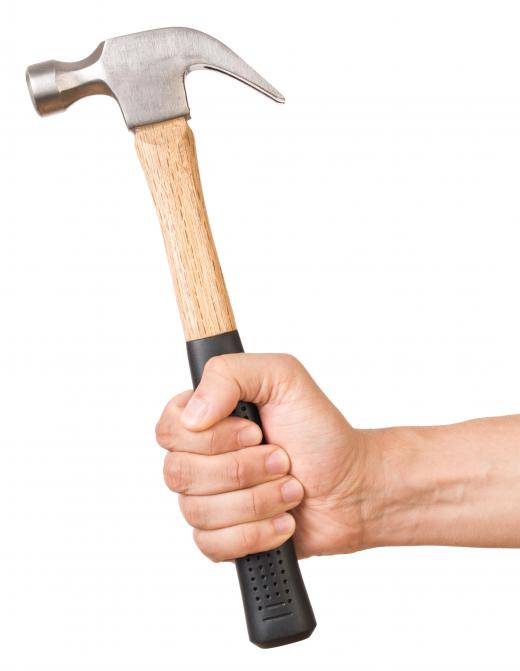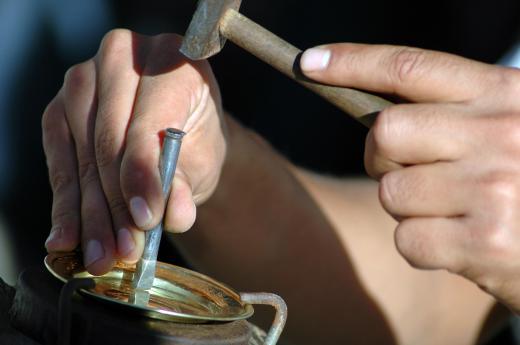Hand engraving is an art that involves an engraver using a hand-operated engraver to dig into a material to create a design or picture. There are three hand-engraving methods, including hammer-and-chisel, push-graving and pneumatic graving. Hand engravers work on a variety of materials, including wood, metal and gemstones, depending on their preference. Many graving tools exist to allow hand engravers to make different cuts, and masters of this art can engrave 40 lines per millimeter into a material, creating highly detailed images.
Unlike modern engraving, which uses laser machines and other mechanical engraving methods, hand engraving focuses solely on graving designs by hand, with limited or no mechanical enhancement. There are three schools of engraving. The most basic is the hammer-and-chisel method, in which the artist holds a hammer in one hand and a chisel in the other, and makes small taps on the chisel to make cuts in the material. The material is held down using a vice.

In push-graving, a chisel unit that is held from the back is used. The other hand then feeds and rotates into the chisel the vice that holds the material to be cut. Pneumatic graving uses a mechanical engraving unit on which a piston forces the tip of the graving unit to move forward slightly. This is similar to hammer-and-chisel, but the engraver has a second hand free to move the material.

The materials that can be cut into via hand engraving vary depending on the artist’s experience and preference. The main material categories include metal, wood and gems. The engraving is done by hand, so some harder materials — such as titanium — cannot be cut into.
To create a range of cuts, different graver tools are employed by hand-engraving artists. Most engraving tools are thin to create tiny lines, but there are wider tools so artists can make larger and darker lines in the material. The graver’s tip is different from tool to tool but can be a flat head or V-head, allowing the artist to create detailed cuts.
While hand engraving is slower than mechanical engraving, and most engravers cannot duplicate images exactly until they are highly experienced, most find engraving by hand to be freer than mechanical engraving. Machines restrict what can be engraved and reduce most of the work to calculations rather than working with the material directly. The only machine most hand engravers use is a copy machine to reduce an image on which he or she is working to help with duplication.
